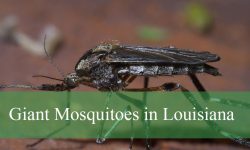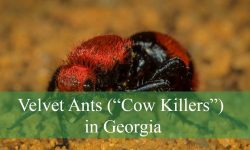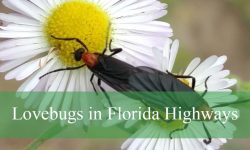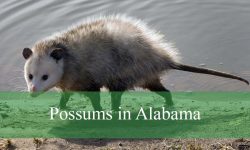Bullet ants are often described as the most painful insects ever discovered. For decades they lived deep within humid Central and South American forests. Yet in recent years these insects have quietly entered a very different environment. They have become part of the growing exotic insect trade in Florida.
This unusual trend surprises many people. Bullet ants are not colorful butterflies or ornamental beetles. They are not small. They are not harmless. They are known for a sting that delivers an electric pain lasting up to twenty four hours. Despite this intense defense mechanism, collectors and exotic pet enthusiasts have begun seeking them out.
The expansion of Florida’s exotic insect market has created unique risks and ethical dilemmas. It has also raised a series of questions about ecology, legality, and animal welfare. As more people become interested in extreme pets, the secretive world of bullet ants in the Florida trade reveals an unexpected and sometimes alarming reality.
Understanding Bullet Ants

What Bullet Ants Really Are
Bullet ants, scientifically known as Paraponera clavata, are among the largest predatory ants in the world. Adults can reach more than an inch in length. Their bodies have a glossy dark coloration that allows them to blend into the dim rainforest environment where they naturally live.
They are not aggressive without reason. However, they defend themselves with an extraordinary sting. The neurotoxic venom is designed not to kill but to send a powerful signal that deters predators. The sting is so intense that it became part of a tribal initiation ritual for the Sateré Mawé people of the Amazon.
The significance of this pain is one of the reasons bullet ants have become so infamous.
Natural Habitat
In the wild, bullet ants occupy tropical lowland rainforests. They build colonies in soil at the base of large trees. Their workers climb trunks in search of food, which often consists of small arthropods and sweet plant secretions.
Humidity, dense vegetation, and stable temperatures shape their natural behavior. When these insects are removed from such environments and transported into captivity, their requirements become difficult to meet. This challenge contributes to many of the welfare concerns surrounding bullet ants in Florida’s exotic pet market.
The Rise of Bullet Ants in Florida’s Exotic Pet Scene
Why They Attract Collectors
Florida has become a hub for exotic pets. Reptiles, amphibians, ornamental insects, and rare arthropods move through specialized communities of breeders, hobbyists, and traders. Bullet ants stand out because of their notoriety. They have a reputation that appeals to collectors drawn to extreme or unusual species.
Some people want to own them simply because they are considered the most painful stinging insects in the world. Others are fascinated by their size and social behavior. There are also educational institutions that legally obtain them for study.
The Secretive Nature of the Trade
Not all bullet ant transactions in Florida are openly reported. Although some sales occur through licensed dealers, others take place through private messaging groups or international shipments that bypass proper documentation.
This secrecy fuels confusion about the legality of owning bullet ants in the state. It also raises concerns about safety because inexperienced collectors may attempt to house a dangerous species without proper knowledge.
The Role of Online Platforms
Social media, exotic pet forums, and private group chats have accelerated the spread of bullet ant trading. Many enthusiasts learn about these insects through viral videos or extreme wildlife channels. Once interest grows, individuals search for sellers who specialize in rare species.
The digital landscape has made it easier for bullet ants to enter Florida’s market, even though they are not native to the region.
Legal and Ethical Questions Surrounding the Trade
Legality of Importing Bullet Ants
Bullet ants originate from Central and South America. Importing insects into the United States requires compliance with national plant and animal health regulations. Some individuals bypass these requirements, increasing the risk of invasive introductions or disease transmission.
Florida has additional state level restrictions designed to prevent harmful species from entering local ecosystems. Because bullet ants have no natural predators in Florida and thrive in warm climates, any accidental release could create ecological problems.
Ethical Concerns About Captivity
Keeping bullet ants as pets raises ethical questions. These insects live in highly social colonies that require complex nesting conditions. The humidity, temperature, and space required for a healthy colony can be difficult to maintain.
Inappropriate captive environments may cause stress, disease, and shortened lifespans. The welfare of the colony often depends on the knowledge of the keeper. New hobbyists attracted by viral videos often underestimate the care needed for a species with such specific ecological requirements.
Risks to Local Ecosystems
Florida’s warm climate makes it a hotspot for invasive species. Burmese pythons, Argentinian tegus, and red imported fire ants already demonstrate the consequences of releasing non native animals. If bullet ants escaped or were intentionally released, they could potentially survive.
Their sting poses a danger to people and pets. Their role as predators could affect native insects. Although no established populations of bullet ants currently exist in Florida, the risk remains whenever exotic species are traded.
The Biology Behind the Pain
Why Bullet Ant Stings Are So Intense
The sting of a bullet ant is widely regarded as the most painful insect sting on the Schmidt Pain Index. People describe the sensation as similar to being shot with a bullet, which is how the species received its name.
The venom contains neurotoxins that interfere with nerve signaling. Instead of causing quick, sharp pain, the venom activates a long lasting, throbbing sensation that radiates throughout the affected limb. The pain can last for hours and sometimes a full day.
How Their Venom Works
The venom disrupts voltage gated sodium channels in nerve cells. This causes prolonged firing of pain receptors. The result is not only extreme discomfort but also muscle spasms, numbness, and temporary inability to use the stung limb.
Although medically significant discomfort occurs, bullet ant venom is not typically deadly to humans. Allergic reactions are rare but still possible.
Behavioral Function of the Sting
In the wild, the sting helps protect the colony. Bullet ants rarely sting unless they feel threatened. Their defensive strategy involves raising their bodies and signaling to colony members. If danger persists, they deliver a powerful sting to drive the threat away.
In captivity, this natural defense behavior may lead to accidents if keepers are inexperienced.
Bullet Ant Husbandry in the Florida Trade
Conditions Required for Survival
To keep bullet ants healthy, keepers must recreate the rainforest environment. High humidity, stable temperatures, and a nest chamber that mimics soil and tree roots are essential. Colonies require both protein and carbohydrate sources.
The ants forage actively. They may explore large areas inside an enclosure, which means secure containment is crucial. Any escape can become dangerous for handlers.
The Difficulty of Maintaining Colonies
Bullet ant colonies are not easy to maintain compared to common pet ants like Camponotus or Lasius. Their brood development takes longer. Their queens are sensitive to environmental disturbance. Workers require space to forage naturally.
If conditions fluctuate, colony collapse can occur quickly. This difficulty contributes to the high cost of bullet ant colonies in the Florida trade.
Feeding Requirements
Bullet ants consume a mixture of arthropods and sugary liquids. In captivity, keepers often provide fruit flies, roaches, small mealworms, and sugar water. A lack of variety may lead to nutritional stress. Hydration is also essential because the species relies heavily on moisture.
Hidden Dangers in the Florida Trade
Improper Handling
One of the biggest risks occurs when new keepers underestimate bullet ant behavior. Because workers move quickly and can climb rough surfaces, enclosures must be escape proof.
Opening the enclosure without proper tools can result in stings. Some keepers suffer multiple stings in a short period due to improper handling.
Accidental Release
Although rare, there have been reports of non native insects escaping from private collections. A release of bullet ants could cause black market colonies to spread into natural areas if conditions are favorable.
Even a single colony escaping in Florida’s climate may have consequences depending on habitat.
Misinformation Among Enthusiasts
Many inexperienced hobbyists rely on online posts or viral videos that often simplify complex care requirements. Bullet ants are sometimes promoted as exciting pets without proper context. This misinformation contributes to improper housing and increased risk.
The Economics Behind Bullet Ant Trading
High Market Value
Because of their rarity and difficulty of care, bullet ants can be expensive. The price increases if the seller provides a queen and a stable colony. Some buyers seek single workers for display rather than maintaining full colonies.
Enthusiasts sometimes justify the cost through the novelty or educational value of keeping such a powerful insect.
International Sources
Bullet ants originate mainly from rainforest regions in Costa Rica, Nicaragua, Colombia, and Brazil. Exportation requires permits. Illegal exporters sometimes remove wild colonies without authorization, which affects native ecosystems.
The demand for Florida’s exotic pet trade may indirectly encourage unsustainable collecting practices abroad.
Online Auctions and Private Sales
Bullet ants are often sold through specialized online groups or private contacts. Some transactions occur quietly to avoid regulatory scrutiny. This makes it difficult to track how many colonies enter Florida each year.
Potential for Public Health Concerns
Risk of Stings to the Public
If bullet ants escape captivity, they pose a risk to individuals who encounter them accidentally. The pain from a sting could lead to emergency room visits. Although bullet ants are not lethal, the reaction may be severe for sensitive individuals.
Antivenom and Medical Treatment
There is no specific antivenom for bullet ant stings. Treatment focuses on managing pain and inflammation. Cooling compresses and antihistamines are helpful. Medical professionals may use numbing injections in severe cases.
The complexity of the pain response makes bullet ants a concern if they appear outside controlled environments.
Potential for Allergic Reactions
Allergies to bullet ant venom are uncommon but not impossible. Individuals with known insect sting allergies may react more strongly.
Conservation Concerns
Impact on Wild Populations
Overharvesting bullet ants from the wild can harm local ecosystems. Colonies take time to develop and require stable habitat. Removing queens or large numbers of workers disrupts natural food webs.
Protecting Rainforest Biodiversity
Tropical forests already face pressures from logging, agriculture, and climate change. Adding commercial collecting to these challenges threatens species that rely on intact ecosystems.
Conservation groups emphasize the need for ethical sourcing and sustainable trade practices.
Education and Research Opportunities
Scientific Interest
Bullet ants offer valuable insight into venom chemistry, social behavior, and rainforest ecology. Researchers study their venom for potential medical applications. Teachers and universities sometimes use captive colonies for demonstration and research when proper permits are obtained.
Public Engagement
Educational exhibits help the public understand insect diversity. When handled responsibly, bullet ants can inspire interest in biology and conservation. However, proper precautions must always be taken.
FAQs About Bullet Ants in the Florida Exotic Pet Trade
Are bullet ants legal to own in Florida
Regulations vary depending on federal and state permits. Some imports require strict documentation. Illegal trade still occurs through private channels.
How dangerous are bullet ant stings
They cause extremely intense pain but are rarely life threatening. Medical care may be needed for severe reactions.
Can bullet ants escape their enclosures
Yes. Without secure containment, they may escape because workers climb well and move quickly.
Do bullet ants make good pets
They require advanced care and are not suitable for beginners. Their sting and habitat needs make them challenging.
How much do bullet ants cost
Prices vary based on colony size and sourcing. Full colonies with queens are significantly more expensive.
Can bullet ants survive in Florida
Warm humid areas of Florida could potentially support them if they escaped, which is why the trade poses ecological risks.
What do bullet ants eat in captivity
They consume insects like fruit flies and roaches along with sugar based liquids for energy.
Are bullet ants collected ethically
Some are collected legally. Others may come from unsustainable or unregulated harvesting.
Do bullet ant colonies have queens
Yes. A colony relies on a queen for reproduction. Trading colonies with queens increases value.
How painful is a bullet ant sting compared to other insects
It is considered the most painful insect sting known, lasting significantly longer than most wasp or bee stings.
Conclusion
Bullet ants are extraordinary insects with complex social structures and one of the most powerful stings in the natural world. Their presence in Florida’s exotic pet trade reveals a surprising intersection of biology, curiosity, and risk. While some enthusiasts value their unique behavior and scientific significance, the challenges of keeping them raise concerns about safety, legality, and ecological impact.
Responsible education and regulated trade are essential to prevent negative outcomes. As interest in exotic insects continues to grow, understanding the hidden realities behind species like bullet ants becomes increasingly important. The fascination surrounding them is undeniable, but it must be matched with awareness and responsibility to protect both people and ecosystems.






